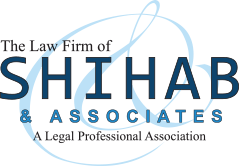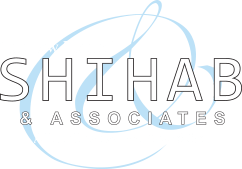Earlier this month, the Department of Homeland Security (DHS) proposed several changes to its F-1 non-immigrant student visa regulations on optional practical training (OPT) for those working on degrees in Science, Technology, Engineering and Mathematics (STEM). The proposed extension would increase the OPT period to 24 months, which would allow STEM students to apply for a longer work authorization extension than before. The OPT program used to only last 17 months. The OPT period would start after the F-1 student completes his or her initial OPT period, which lasts 12 months. The proposal favors F-1 STEM students in several other ways.
Ideally, the longer amount of time for F-1 students would allow them to apply for several different H-1B job opportunities. H-1B visa could be a first step for F-1 students to begin a career and apply for their green card. In recent years, it has been difficult for F-1 graduates to apply for employment opportunities through an H-1B visa, given that the number of H-1B applicants has increased several years in a row. Last year saw almost two-thirds too many H-1B applications, as over 240,000 applied for a limit of 85,000 H-1B’s available.
Also, those STEM graduates who would leave the U.S. after completing the initial one-year OPT program can return and receive the same extension if they choose to return for a Master’s degree. Any F-1 student on a seventeen-month extension can apply for the additional extension if the proposed ruling passes. If a graduated F-1 student with a STEM degree goes through an unemployment period, the proposal would increase that period to fill out a form I-765 from 30 to 60 days.
Several things must be completed before an F-1 student receives the extension, however. The Mentoring and Training Program (MTP) requires certain authorizations for those looking to extend their OPT program. The MTP requires the employers of F-1 students to prove that the students remains committed to work that has to do with their previous STEM education. The employer of an F-1 student using the STEM OPT program must be prepared to prove all facets of employment, including salary, hours, services, and benefits to show that the employee is being compensated properly. For the MTP, employers must show how the F-1 student will learn while on the job by stating their job description and goals to show it is a useful training opportunity. They will need to explain, in detail, the necessary skills that the student will learn while working for them. They will need to show how the training is directly related to STEM courses. They will also need to keep track of the student’s performance and evaluate them properly to show that the training is proving to be fruitful. Basically, employers have to be prepared to work for their STEM OPT workers to be employed and also show that they have helped train the student to help them in their future endeavors.
The proposed changes will not doubt attract more STEM students from around the globe to attend America’s universities. The universities and colleges in the United States would become even more competitive with the rest of the world when it comes to attracting foreign STEM students. It would become much easier for those students to get into and remain in the United States. The more time will also allow students more time to practice their craft, becoming more useful in their respective field of study.
If you have questions about non- immigration visa for college or university students, and/or you need help in an immigration process, please contact our immigration attorneys or call The Law Firm of Shihab & Associates, Co., LPA at the nearest office close to you to consult with an attorney. Our law firm handles various matters including Green Cards and Permanent Residence, family immigration, immigrant visas, non-immigrant visas, employment visas and H-1B visas, investors-visa, PERM applications and many more.
Related Blog Posts- The Good, The Bad, and The Ugly — The Newly Proposed USCIS STEM OPT Regulations, http://www.natlawreview.com/article/good-bad-and-ugly-newly-proposed-uscis-stem-opt-regulations
- Improving and Expanding Training Opportunities for F-1 Nonimmigrant Students With STEM Degrees and Cap-Gap Relief for All Eligible F-1 Students, https://www.federalregister.gov/articles/2015/10/19/2015-26395/improving-and-expanding-training-opportunities-for-f-1-nonimmigrant-students-with-stem-degrees-and
- STEM OPT Rulemaking, http://www.nafsa.org/Find_Resources/Supporting_International_Students_And_Scholars/ISS_Issues/STEM_OPT_Rulemaking/

